
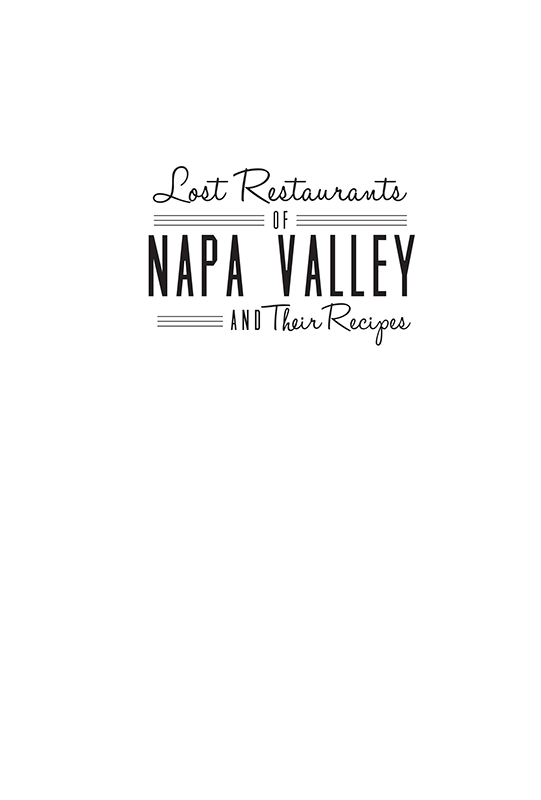

Published by American Palate
A Division of The History Press
Charleston, SC
www.historypress.com
Copyright 2020 by Alexandria Brown
All rights reserved
First published 2020
E-book edition 2020
ISBN 978.1.4396.6966.2
Library of Congress Control Number: 2019956024
Print Edition ISBN 978.1.4671.4461.2
Notice: The information in this book is true and complete to the best of our knowledge. It is offered without guarantee on the part of the author or The History Press. The author and The History Press disclaim all liability in connection with the use of this book.
All rights reserved. No part of this book may be reproduced or transmitted in any form whatsoever without prior written permission from the publisher except in the case of brief quotations embodied in critical articles and reviews.
To my mom, who puts up with a lot and loves me anyway.
Contents
Preface
Some of my fondest memories from childhood are tied to foodmy mom teaching me how to make cornbread, sneaking popcorn into the Cinedome, school lunches of haystacks and vegetarian corn dogs, church potlucks, a slice of pizza from Papa Joes after piano lessons, Saturday afternoon lunch at Marie Callenders. Food brings us together as family, as friends, as a community, but rarely do we think about where that food came from. We do not often consider the people who grew and harvested the ingredients, the cooks who prepared it, the staff who served it, the restaurateur who manages the business, the first people who invented the original dish and the people who appropriated it into something else.
While researching this book, many Napans shared with me their stories about their favorite restaurants: the librarian who still mourned the loss of First Squeeze, the local history lovers who told tales of the Shrimp Boat, the Swiss-Italian immigrant who favored the Grape Vine Inn, the seniors who fondly recalled whiling away their teen years at the Wright Spot and more. There was simply no way to include every restaurant from Napa Countys beginnings until today without producing a multivolume series thousands of pages in length. Instead, the eateries herein represent some of the culinary trends that had the greatest impact on the county. This book will reveal the origins of some of our most beloved dishes, shed light on the people who cooked and served them and explore how the history of Napa Countys cuisine informs our present and shapes our future.
Acknowledgements
This book would not have been possible without the assistance and contributions of the following: Beverly Brown Healey, Diane R. Adams, John L. Callan, Rick Curry, Craig and Jeannine Graffin, Jeanette Mulgrew, Herman Soon and Cheryl Fielder, Jean and Tom Nicholson of the Taylor family, Todd L. Shulman, Kimberly Wilkinson, Robert Zeller, Breanna Feliciano of Napa County Library, Kathy Bazzoli, Gail Sharpsteen and Bev Barnes of the Sharpsteen Museum, Lawrence Rodriguez of the Office of the Assessor and County Clerk/Recorder, the Offices of the County Clerk and the Hall of Records, St. Helena Historical Society, California State Library, the Huntington Library and the hardworking staff and volunteers at Napa County Historical Society.
I also want to thank the Nichelini familyparticularly Doug and Kay Patterson, Dorothy Hoffman, Diane Patterson and Leona Marinifor their support.
And extra special thanks to my dedicated research assistant Oliver.
 PART I
PART I 
THE EARLY DAYS OF EATING OUT
IN THE 1880S, HISTORIAN HUBERT HOWE BANCROFT RUMINATED on the state of restaurants in California: The best are kept by foreigners, Germans, French, Italians; American restaurants are invariably second, third, or fourth rate. The typical American can keep a hotel such as no foreigner may hope to equal, but when it comes to restaurant-feeding, the tables are turned. Why this disparity? Bancroft believed it was because the American hotel is an American institution, while the restaurant is as fully European. While it is true that many immigrants, European or otherwise, worked in Californias food service industry, which group made the better restaurateur is contestable. On the origins of the restaurant, however, he was spot on.
Restaurants were born in Paris. In those early eateries, wealthy patrons unable to eat a full meal of solid food found sustenance by consuming a meat broth called a restaurant. Meals were available at all hours rather than only during set times. Guests were seated at tables by waiters and given a menu to peruse. By the 1820s, the menus of Parisian restaurants had expanded, and the layout and functionality of the physical space was beginning to look similar to modern restaurants.
The first restaurants landed in the United States in the early nineteenth century. But it was the boom in population brought by the gold rush, urbanization and the influx of British and European immigrants that kicked off the restaurant revolution. Napas early restaurants had one major difference from those of today: many offered sleeping quarters. In the 1850s and 1860s, the population was growing fast, and there were few permanent structures. Anyone who wanted a house had to purchase the land and acquire and assemble all the construction materials. Once it was built and furnishings and kitchen equipment purchased and installed, the entire cooking processfrom procuring and storing ingredients to preparing dishesmight take several hours. This was simply unfeasible for a lot of people, especially those who were single, poor and/or lived in urban areas or temporary encampments.
Because so many people needed somewhere to eat and a place to sleep, hotels often served meals while restaurants and saloons often offered beds. The food at a hotel might not be as good as at a restaurant, but the establishment usually had private rooms, ideal for long-term residents. Frequently, the lodging available at a restaurant or saloon were cots, bunkbeds or spaces marked off on the floor for bedrolls, but the food was generally decent. Where food was availableat a saloon, hotel, lodging or boarding house or restaurantmattered less than whether it was affordable and edible.
Chapter 1
Empire Saloon
Nineteen-year-old Nathan Coombs arrived in Napa in 1845. At the time, what is now Napa city was divided between three Californio (Mexican citizens born and living in the Alta California region of Mexican territory) rancho owners: Nicols Higuera, Cayetano Jurez and Colonel Salvador Vallejo, brother of General Mariano Vallejo. Napas Indigenous people, the Wappo and Southern Patwin, mostly labored on nearby missions or ranchos that had once been their ancestral lands, although some managed to continue living in their traditional ways. Coombs was one of an increasing number of American and British immigrants encroaching on Mexican territory. He and numerous other men, many of whom would later become prominent Napans, instigated the Bear Flag Revolt in June 1846. They marched across the northern part of the county into Sonoma and imprisoned members of the Vallejo family. Then they claimed California for the United States.
Next page
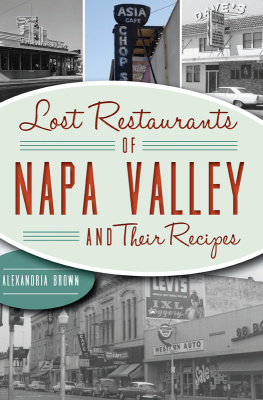
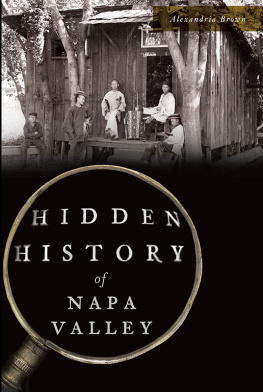



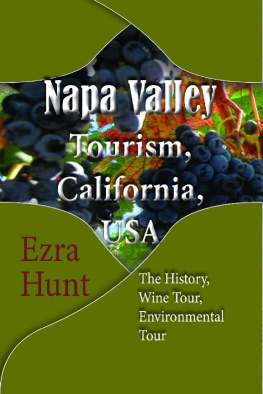
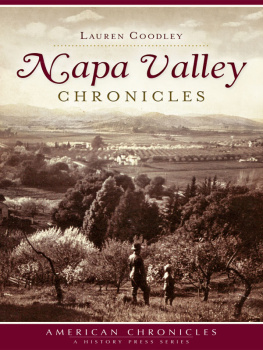
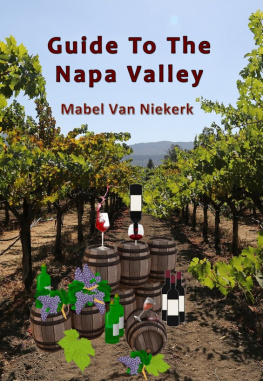
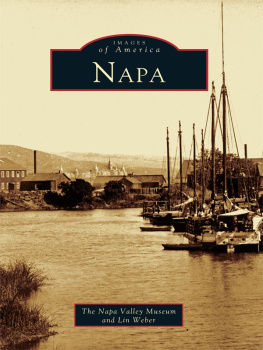
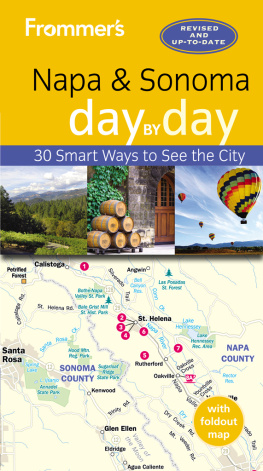



 PART I
PART I